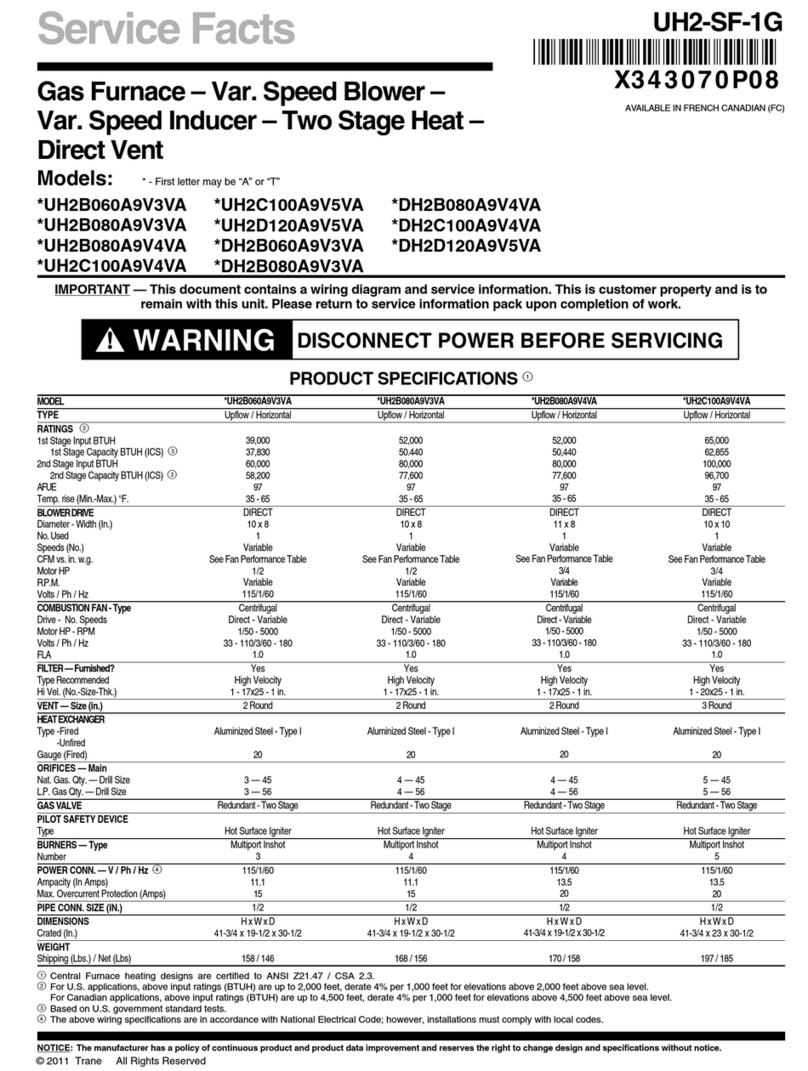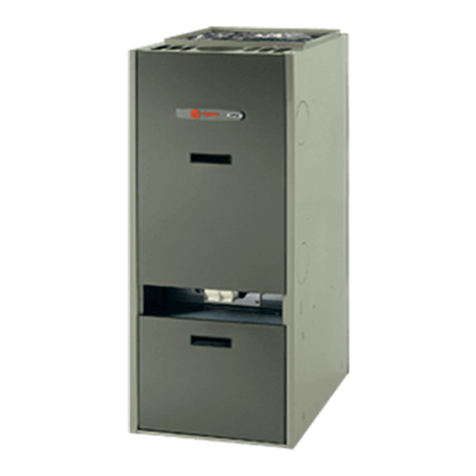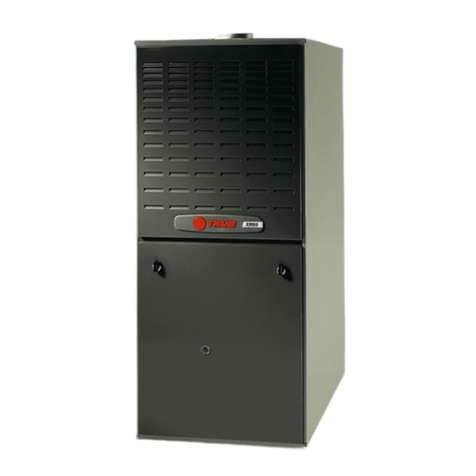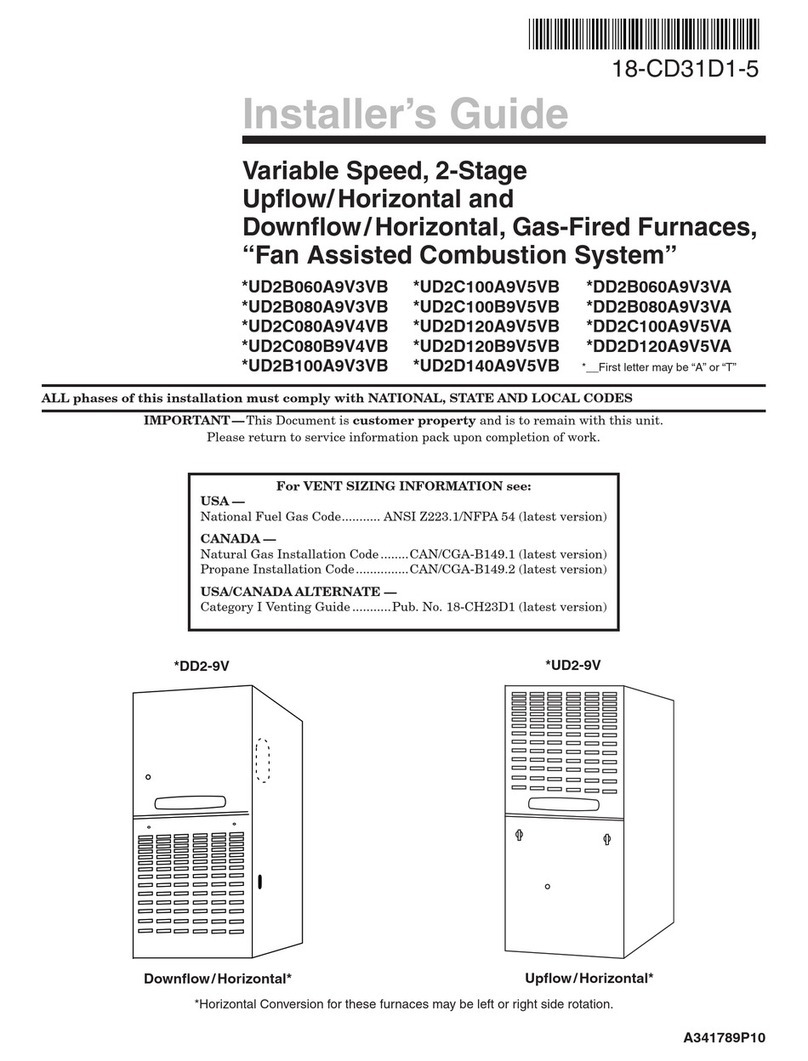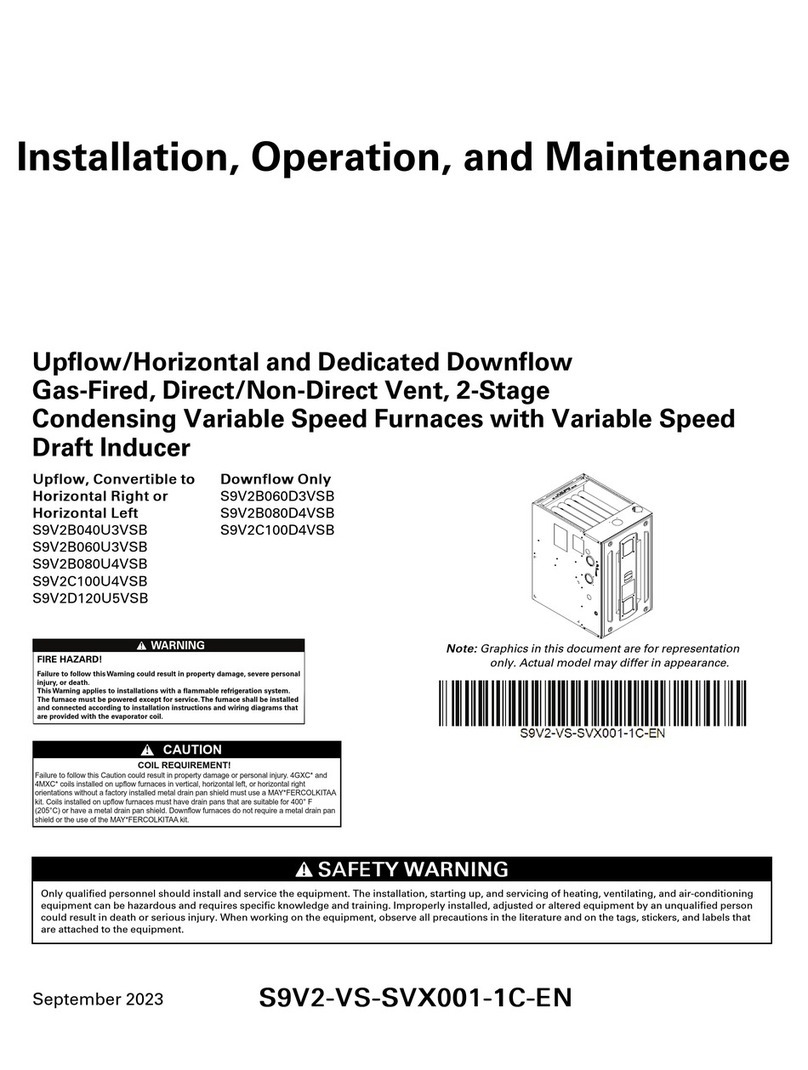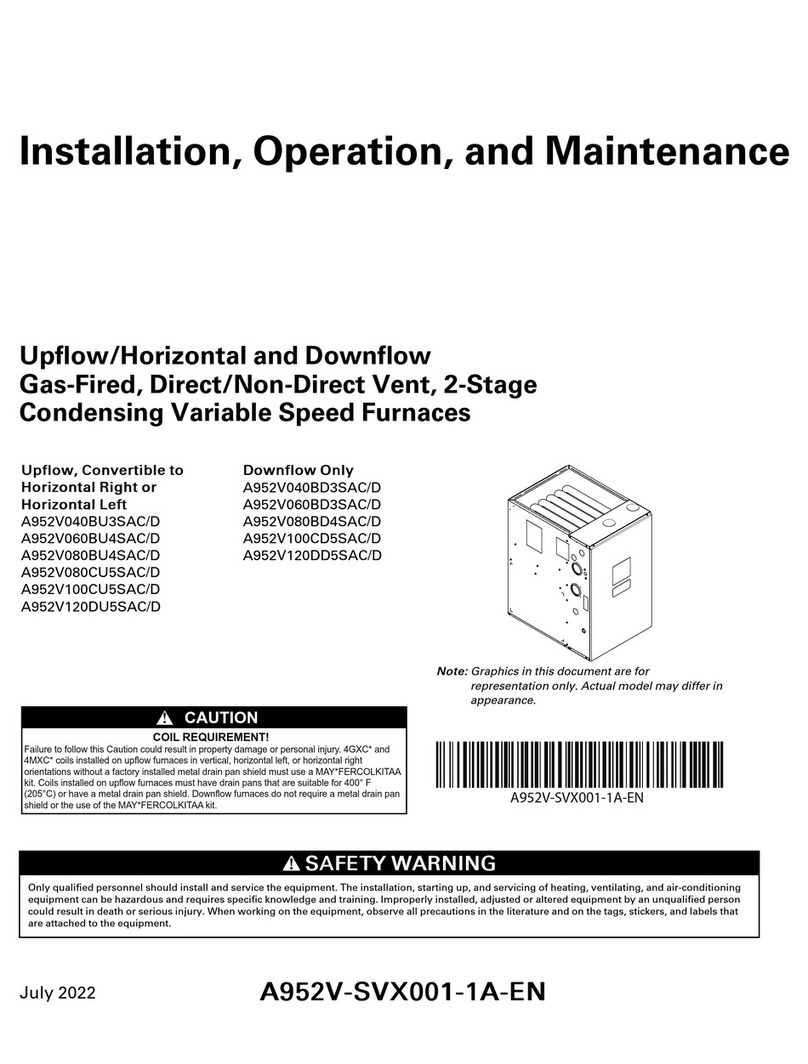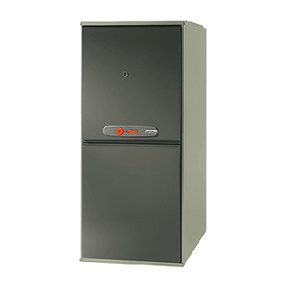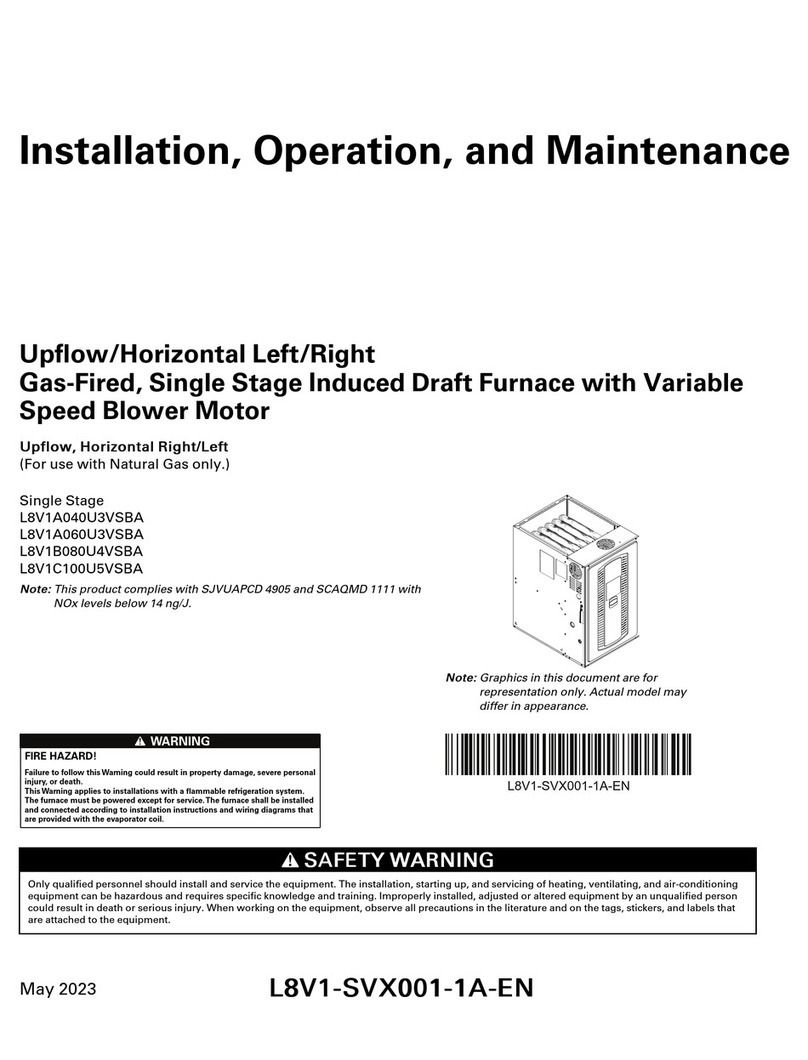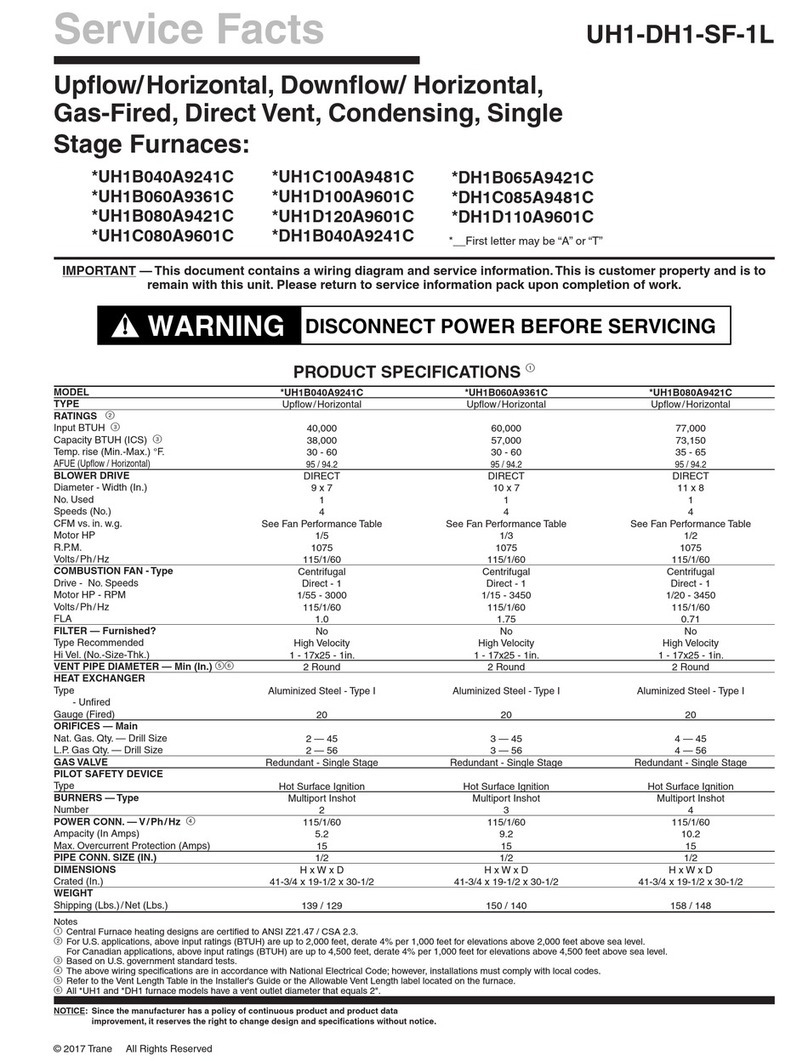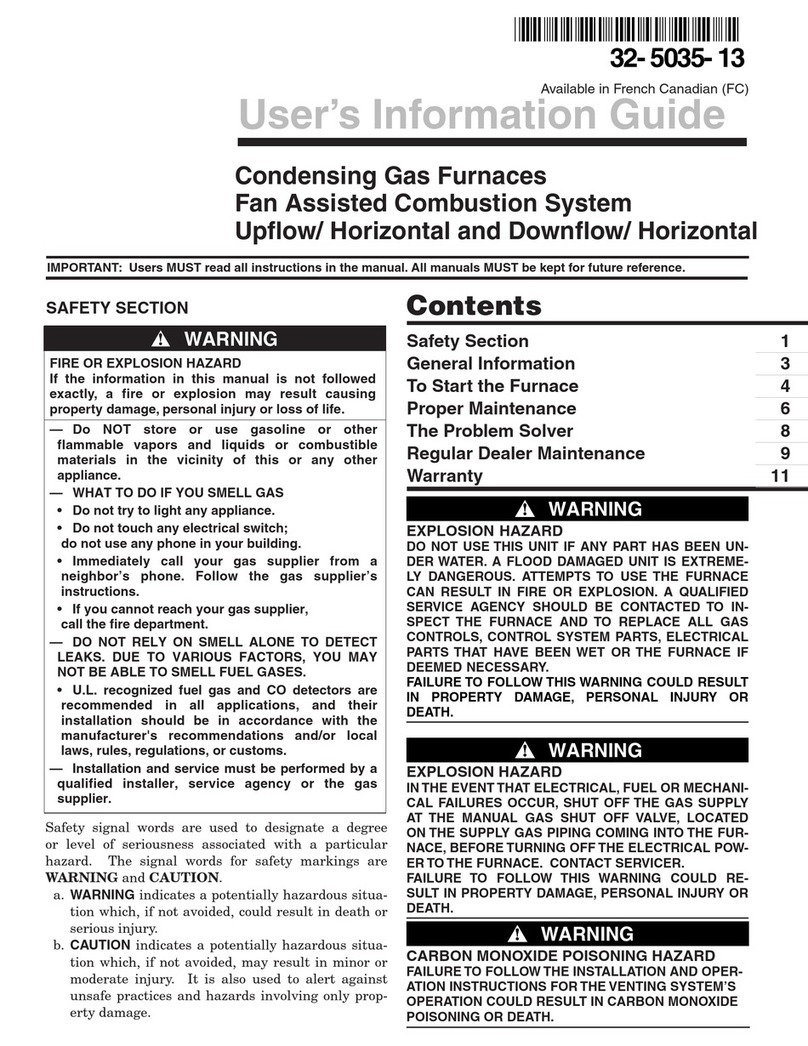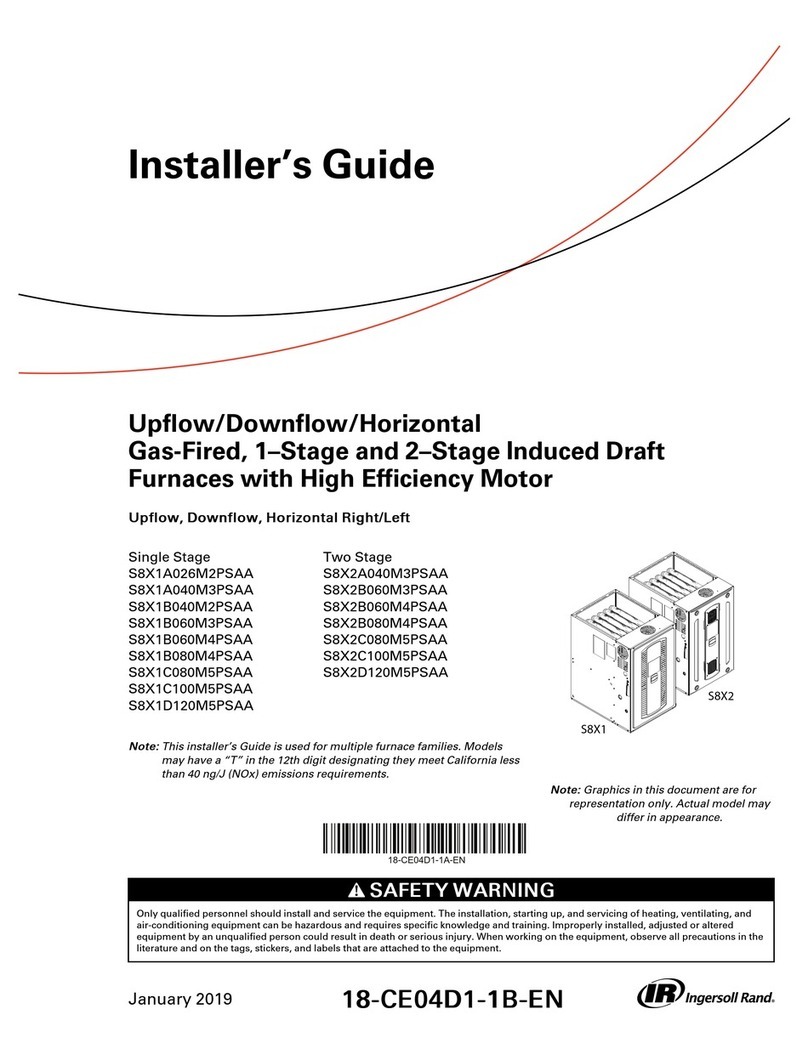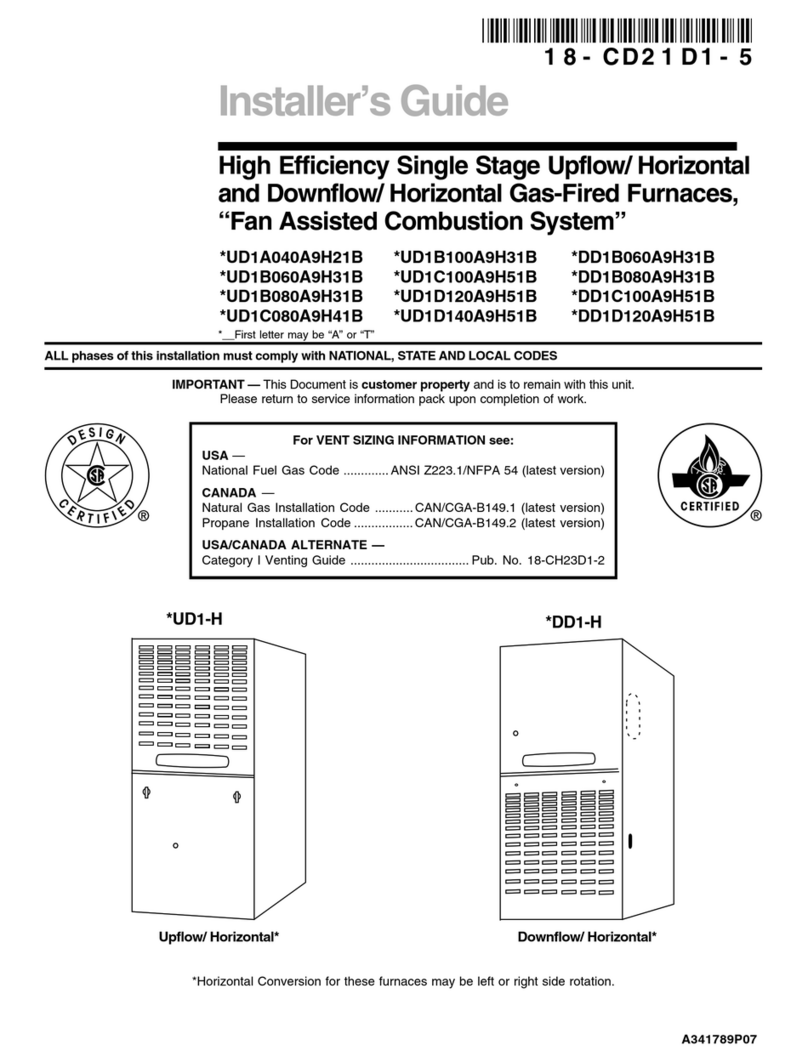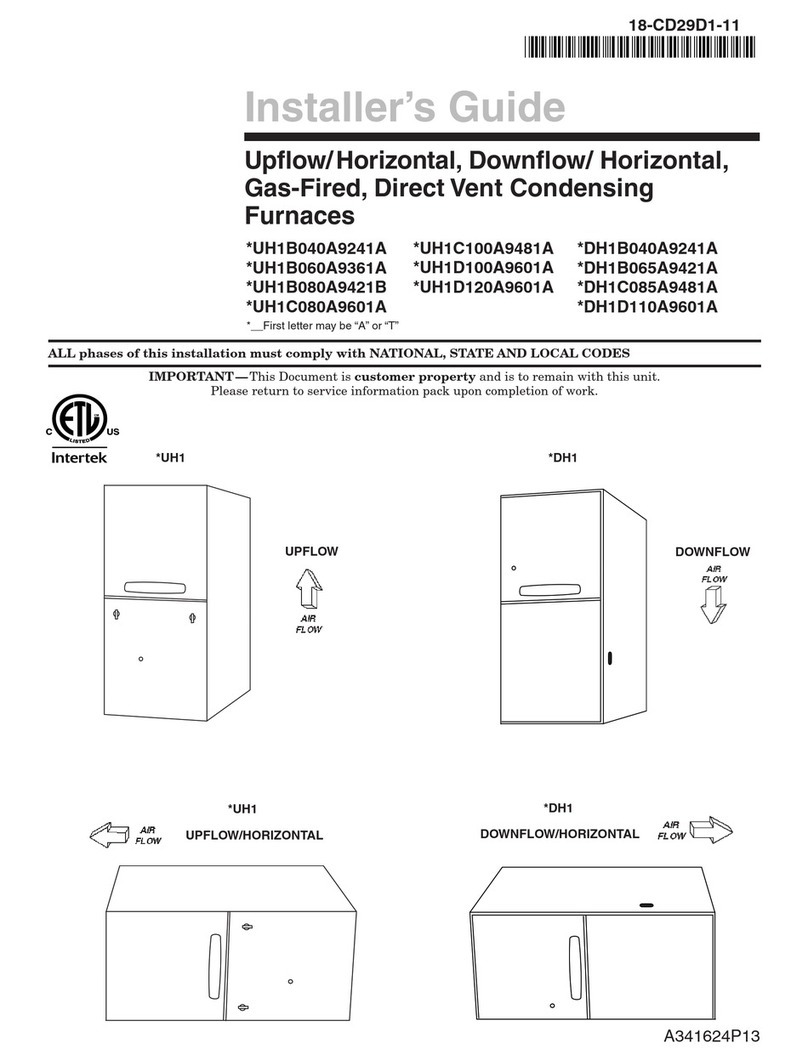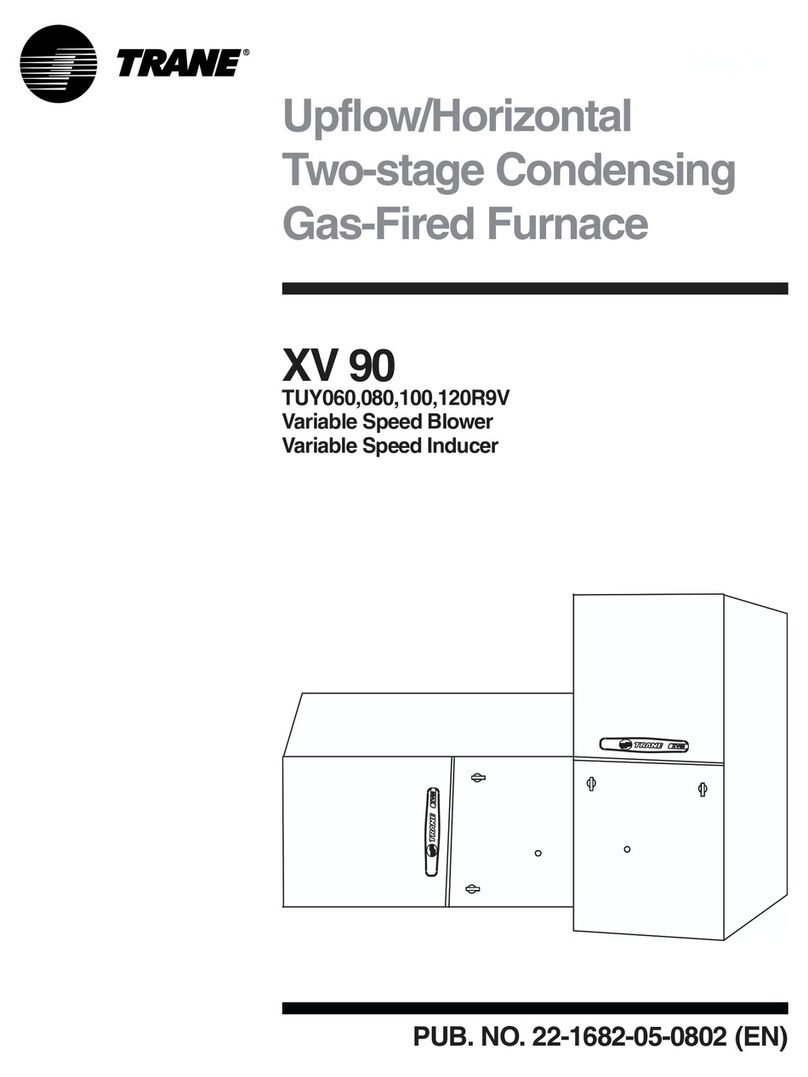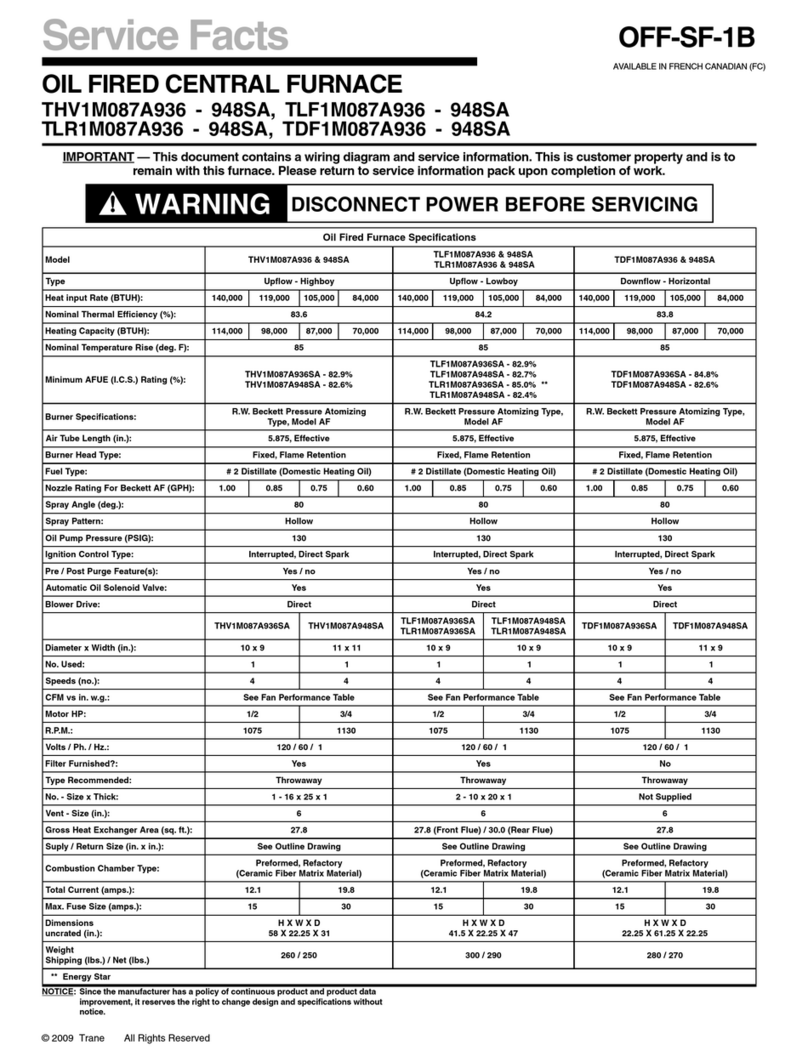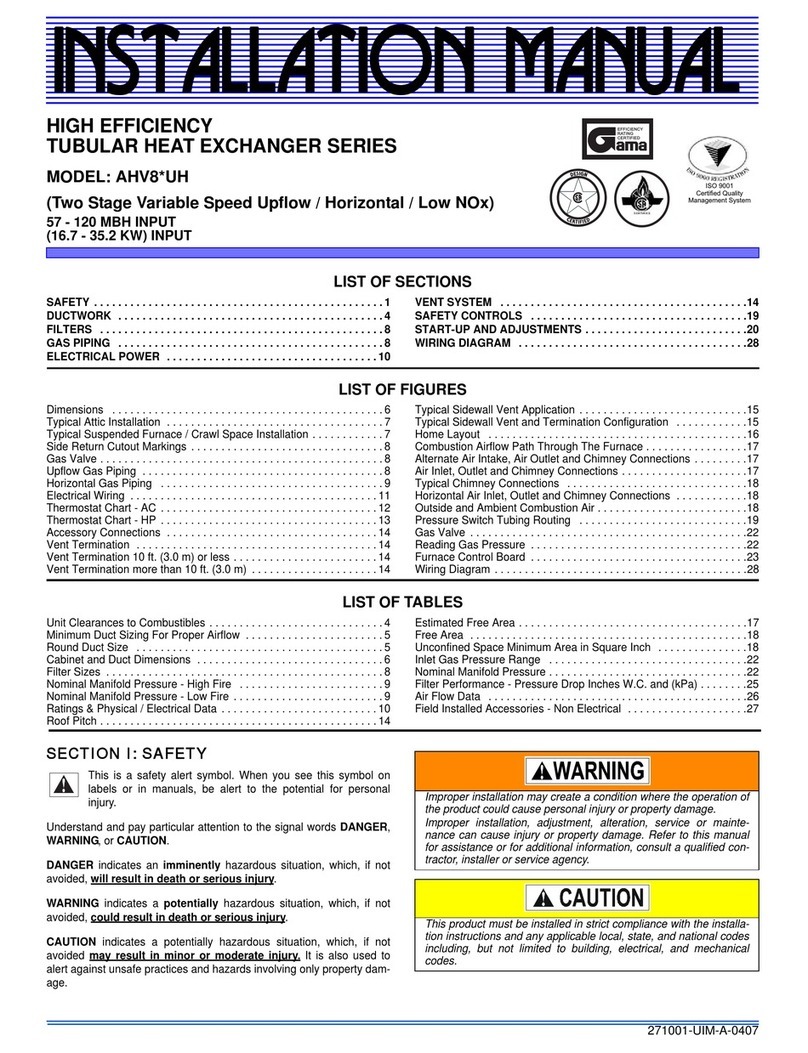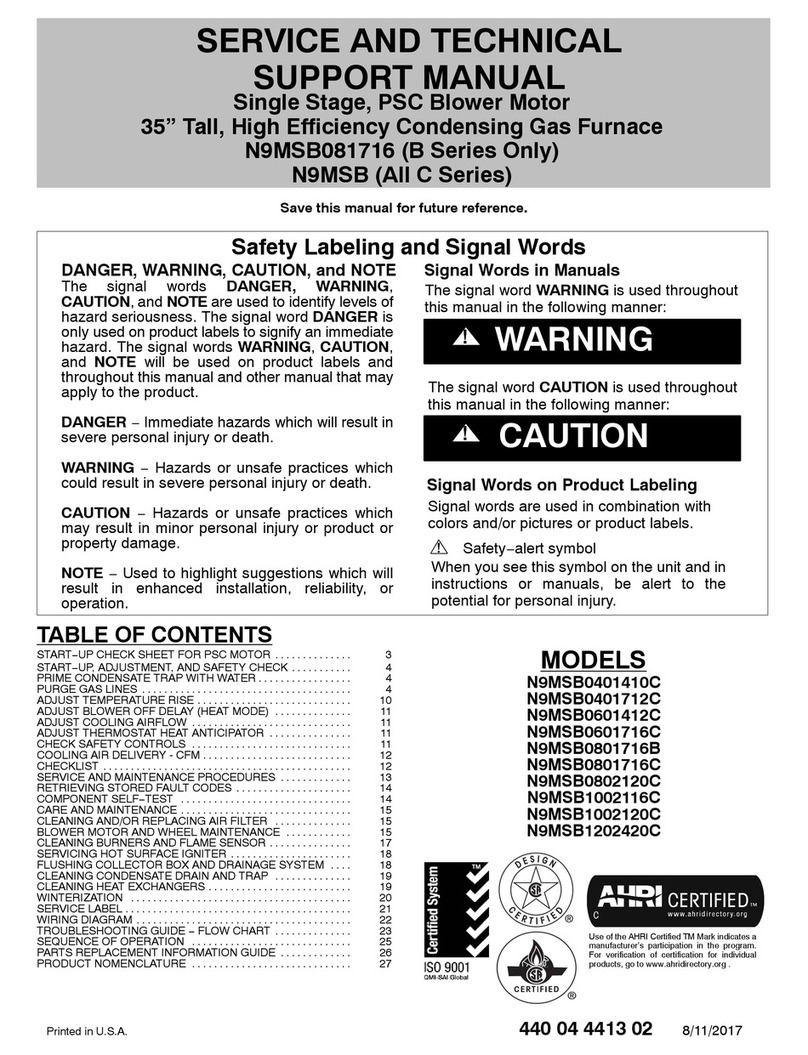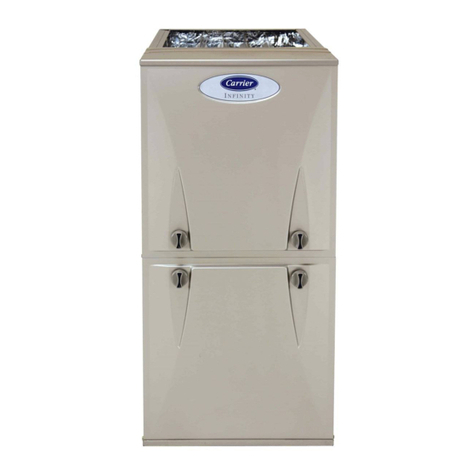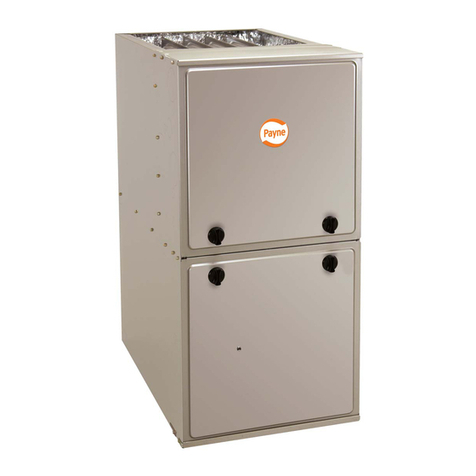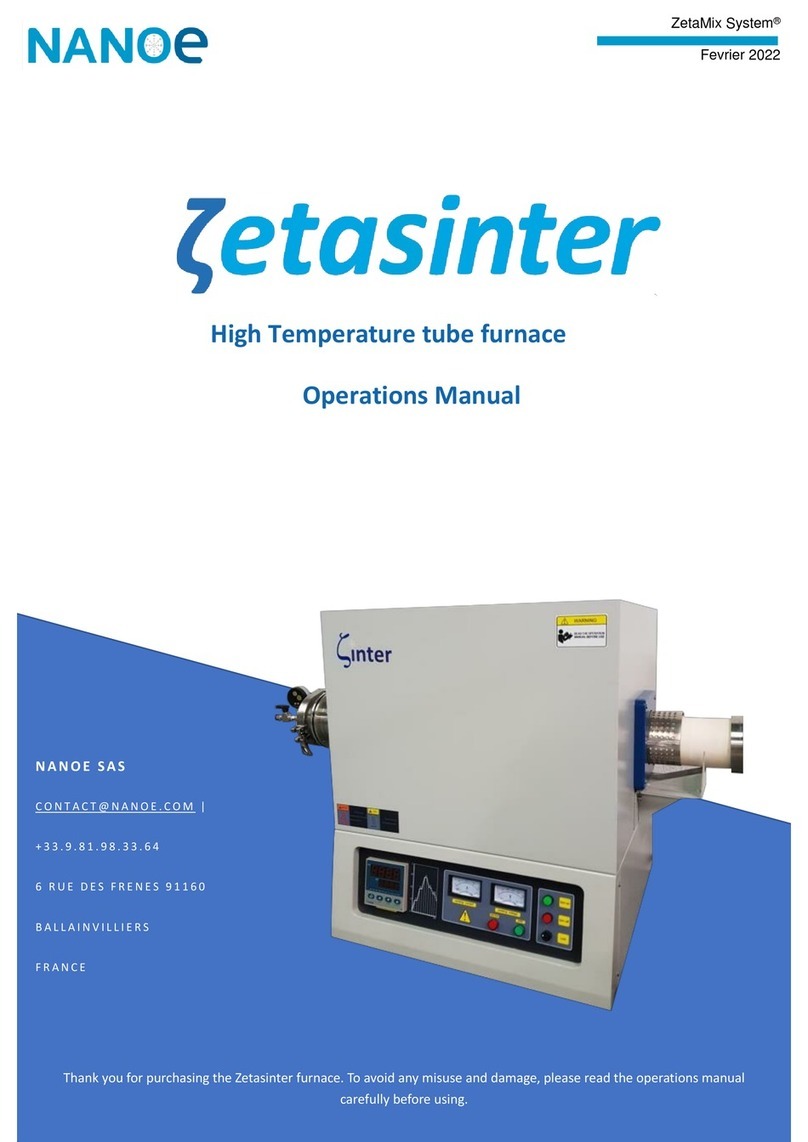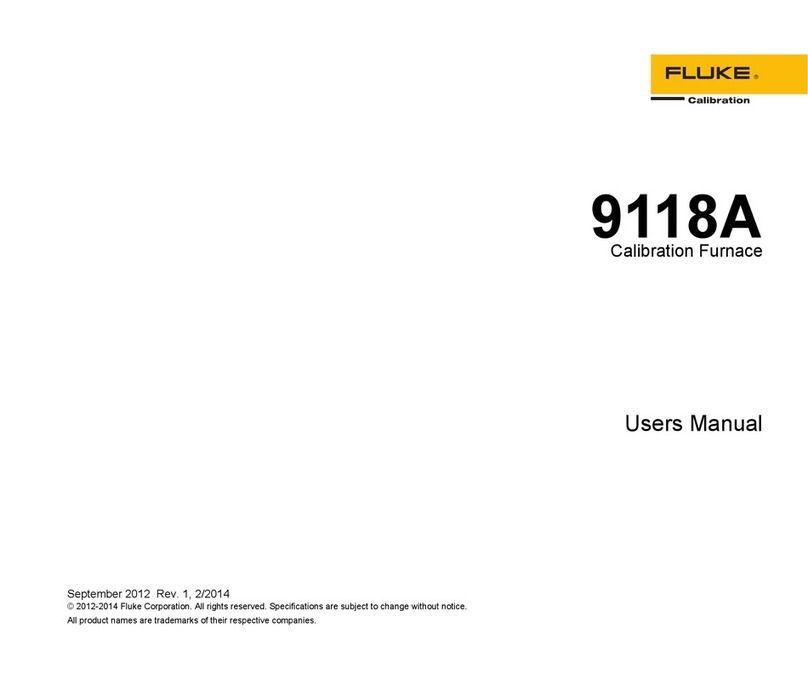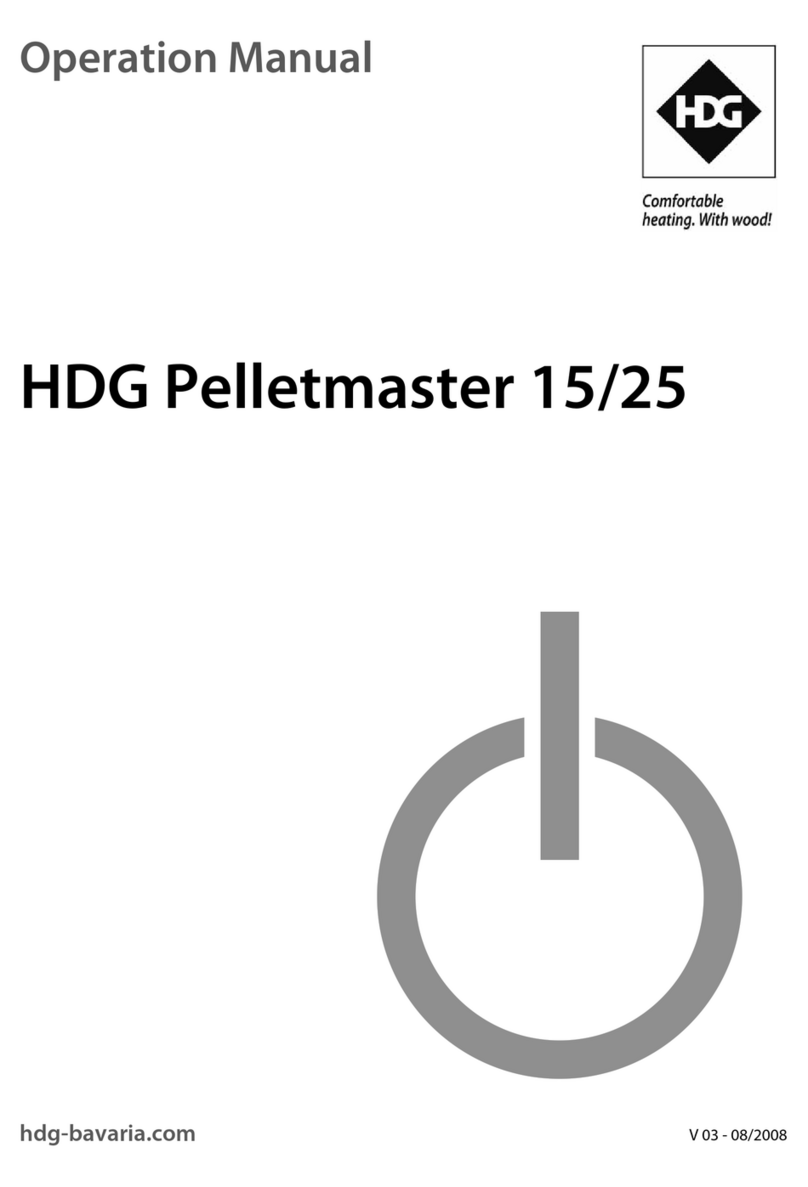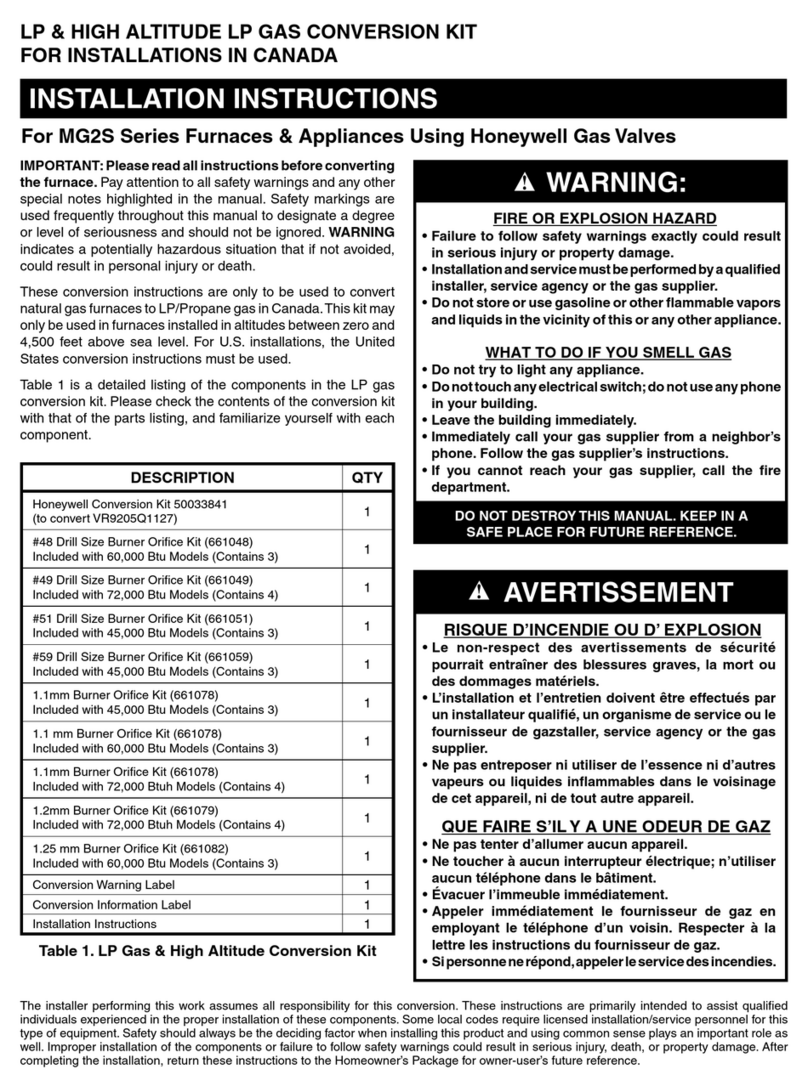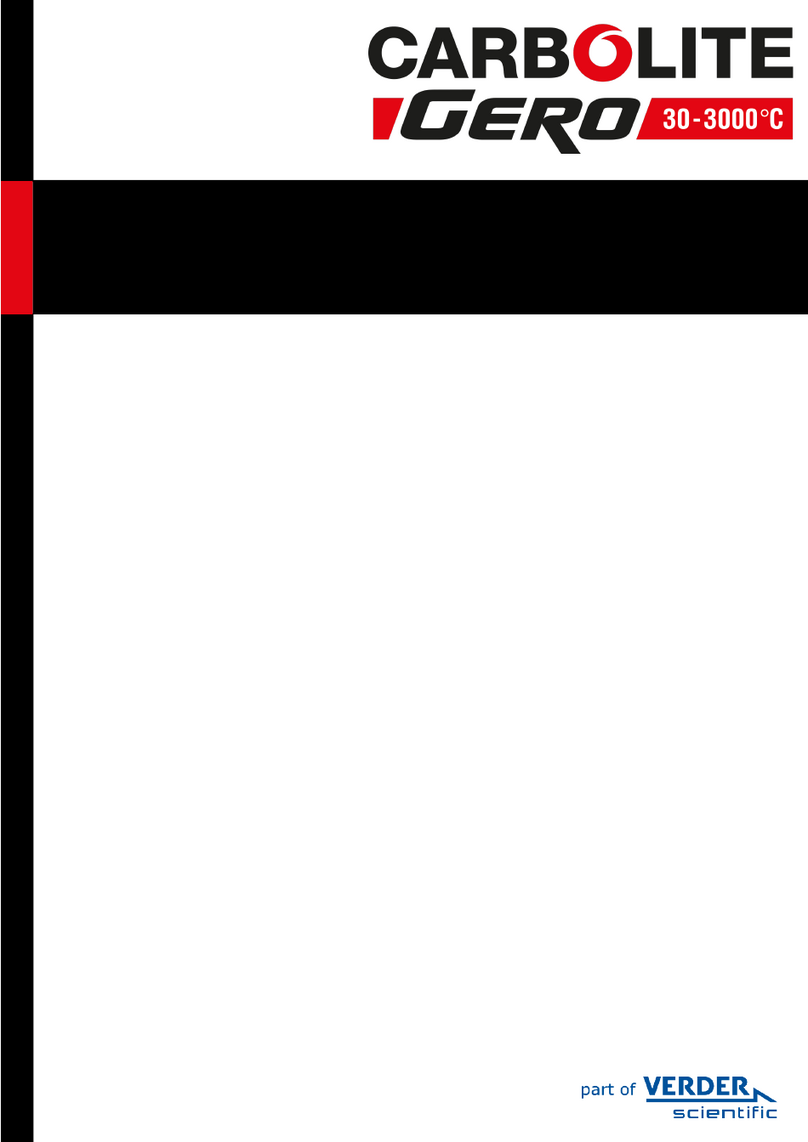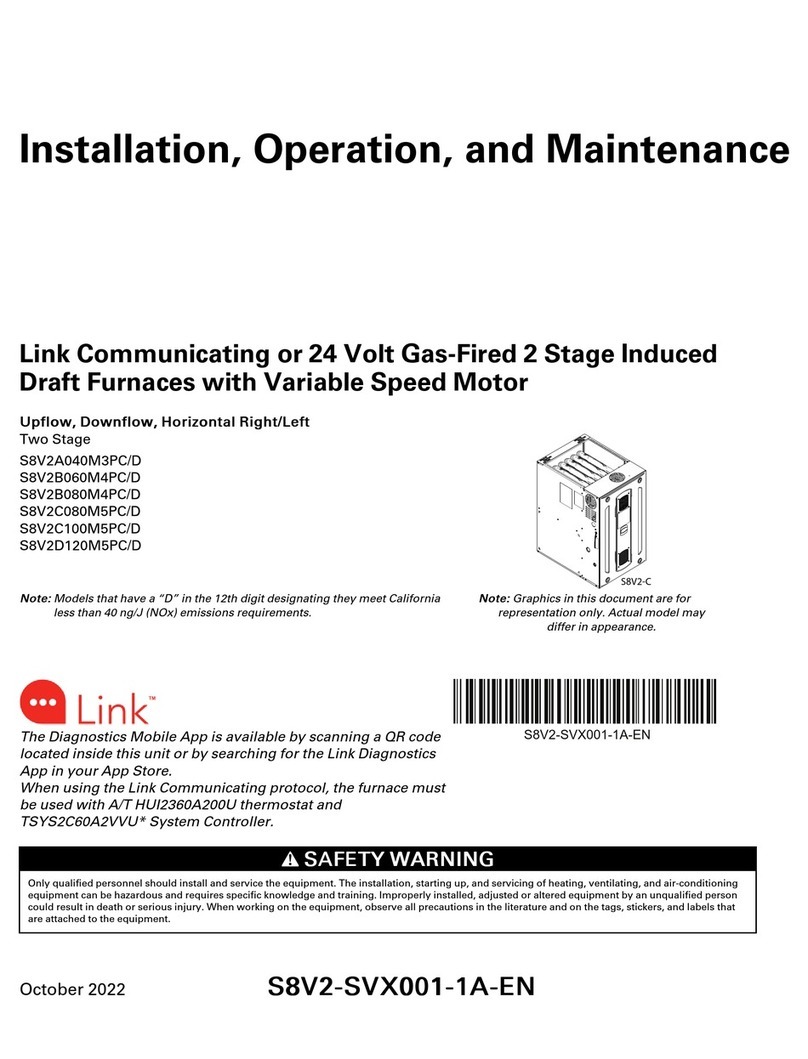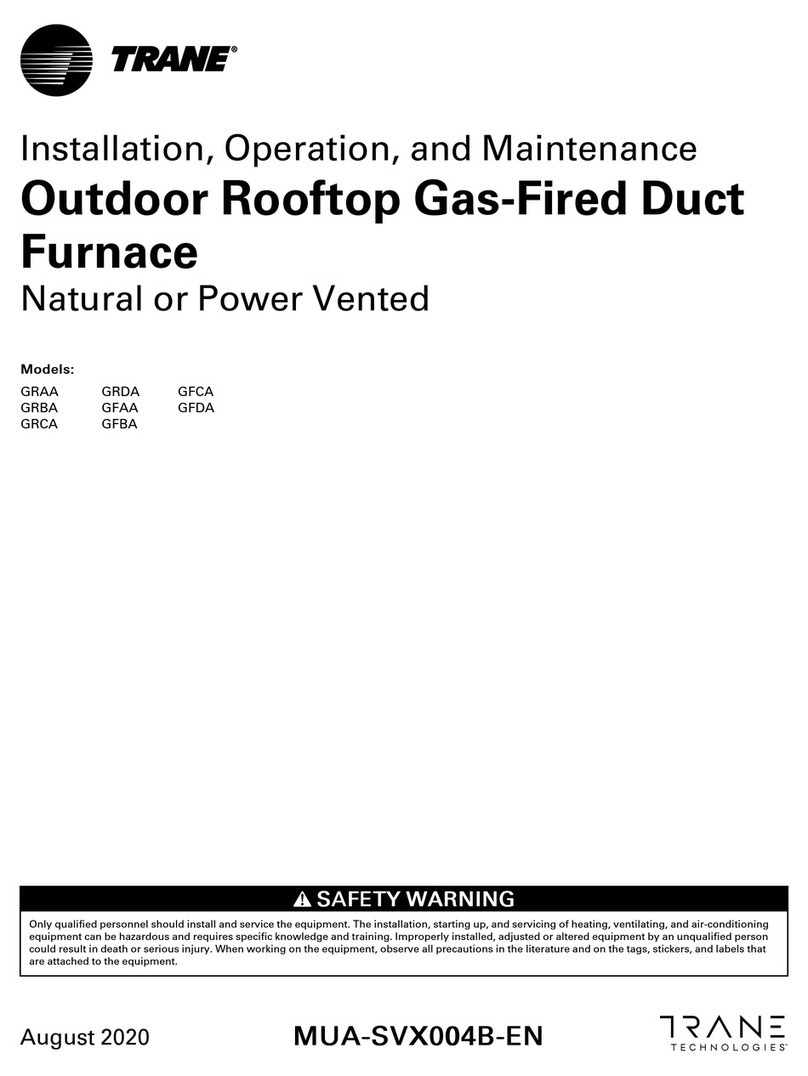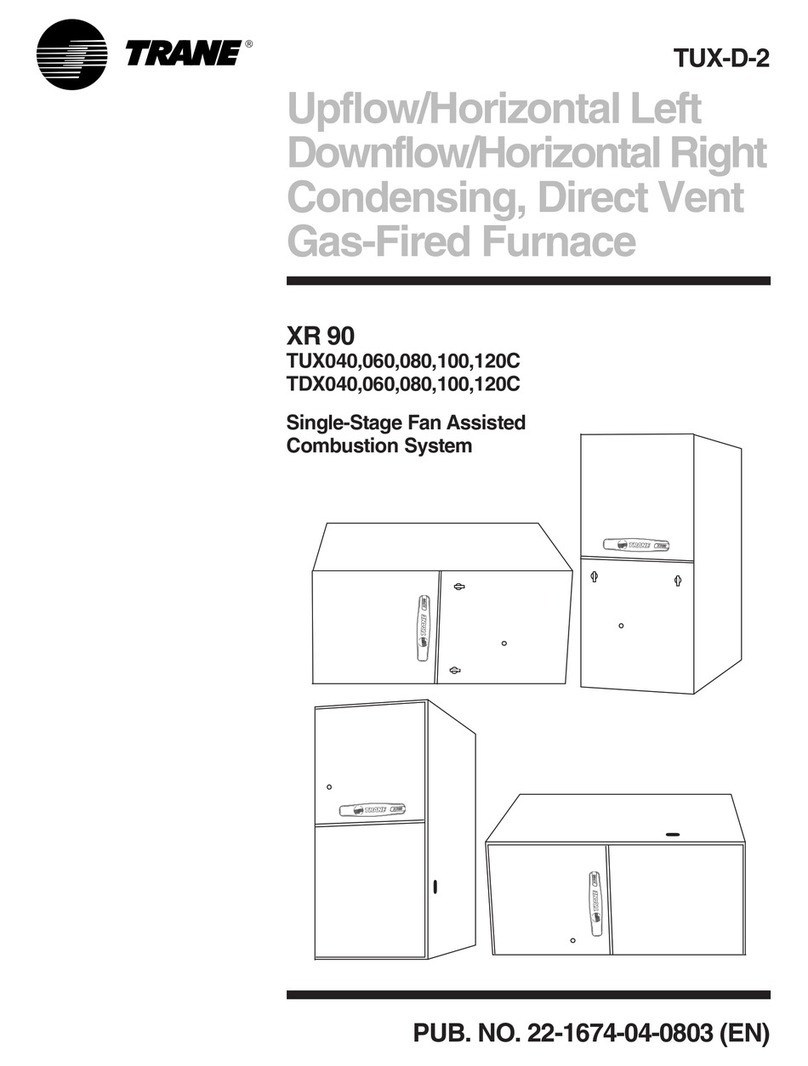
4 18-CD32D1-3
Installer’s Guide
9. The furnace may be used for temporary heating of
buildings or structures under construction only when
the following conditions have been met:
a. The furnace venting system must be complete and
installed per manufacturer’s instructions.
b. The furnace is controlled only by a room thermostat
(no field jumpers).
c. The furnace return air duct must be complete and
sealed to the furnace and clean air filters are in
place.
d. The furnace input rate and temperature rise must
be verified to be within nameplate marking.
e. 100% of the furnace combustion air require-
ment must come from outside the structure.
f. The furnace return air temperature range is be-
tween 55 and 80 degrees Fahrenheit.
g. Clean the furnace, duct work, and components upon
substantial completion of the construction process,
and verify furnace operating conditions including
ignition, input rate, temperature rise and venting,
according to the manufacturer’s instructions.
10. This product must be gas piped by a Licensed Plumber
or Gas Fitter in the Commonwealth of Massachusetts.
FIRE OR EXPLOSION HAZARD
Failure to follow the safety warnings exactly could result
in serious injury, death or property damage. Improper ser-
vicing could result in dangerous operation, serious injury,
death, or property damage.
GENERAL INSTALLATION INSTRUCTIONS
The manufacturer assumes no responsibility for equipment
installed in violation of any code or regulation.
This furnace can be configured for Communicating
or 24 VAC modes. Using fully Communicating or 24
VAC modes, the furnace can support single or multi
stage heat pump, AC, or heating only applications.
Combined with a communicating Comfort Control
only, the furnace will support a single stage 24 VAC
cooling outdoor unit only.
It is recommended that Manual J of the Air Conditioning
Contractors Association (ACCA) or A.R.I. 230 be followed
in estimating heating requirements. When estimating
heating requirements for installation at Altitudes above
2000 ft., remember the gas input must be reduced (See GAS
INPUT ADJUSTMENT).
Material in this shipment has been inspected at the
factory and released to the transportation agency
without known damage. Inspect exterior of carton
for evidence of rough handling in shipment. Unpack
carefully after moving equipment to approximate
location. If damage to contents is found, report the
damage immediately to the delivering agency.
Codes and local utility requirements governing the instal-
lation of gas fired equipment, wiring, plumbing, and flue
connections must be adhered to. In the absence of local
codes, the installation must conform with latest edition of
the National Fuel Gas Code ANSI Z223.1 • National Instal-
lation Code, CAN/CGA B149.1. The latest code may be
obtained from the American Gas Association Laboratories,
400 N. Capitol St. NW, Washington D.C. 20001.
1-800-699-9277 or www.aga.org
These furnaces have been classified as Fan Assisted Com-
bustion system CATEGORY I furnaces as required by
ANSI Z21.47 “latest edition” and CAN/CGA 2.3. Therefore
they do not require any special provisions for venting other
than what is indicated in these instructions. (Category I
defined on page 15).
SAFETY HAZARD
These furnaces are not approved or intended for installa-
tion in manufactured (mobile) housing, trailers, or rec-
reational vehicles. Failure to follow this warning could
result in property damage, personal injury, or death.
LOCATION AND CLEARANCES
The location of the furnace is normally selected by the
architect, the builder, or the installer. However, before the
furnace is moved into place, be sure to consider the follow-
ing requirements:
1. Is the location selected as near the chimney or vent and
as centralized for heat distribution as practical?
2. Do all clearances between the furnace and enclosure
equal or exceed the minimums stated in Clearance
Table on the Outline Drawings.
3. Is there sufficient space for servicing the furnace and
other equipment? A minimum of 24 inches front acces-
sibility to the furnace must be provided. Any access
door or panel must permit removal of the largest com-
ponent.
4. Are there at least 3 inches of clearance between the
furnace combustion air openings in the front panel and
any closed panel or door provided?
5. Are the ventilation and combustion air openings large
enough and will they remain unobstructed? If outside
air is used, are the openings set above the highest snow
accumulation level? (See the Air for Combustion and
Ventilation section.)
6. Allow sufficient height in supply plenum above the
furnace to provide for cooling coil installation, if the
cooling coil is not installed at the time of this furnace
installation.
7. A furnace shall be installed so electrical components
are protected from water.
8. If the furnace is installed in a residential garage, it
must be installed so that the burners, and the ignition
source are located not less than 18 inches above the
floor and the furnace must be located or protected to
avoid physical damage from vehicles.
